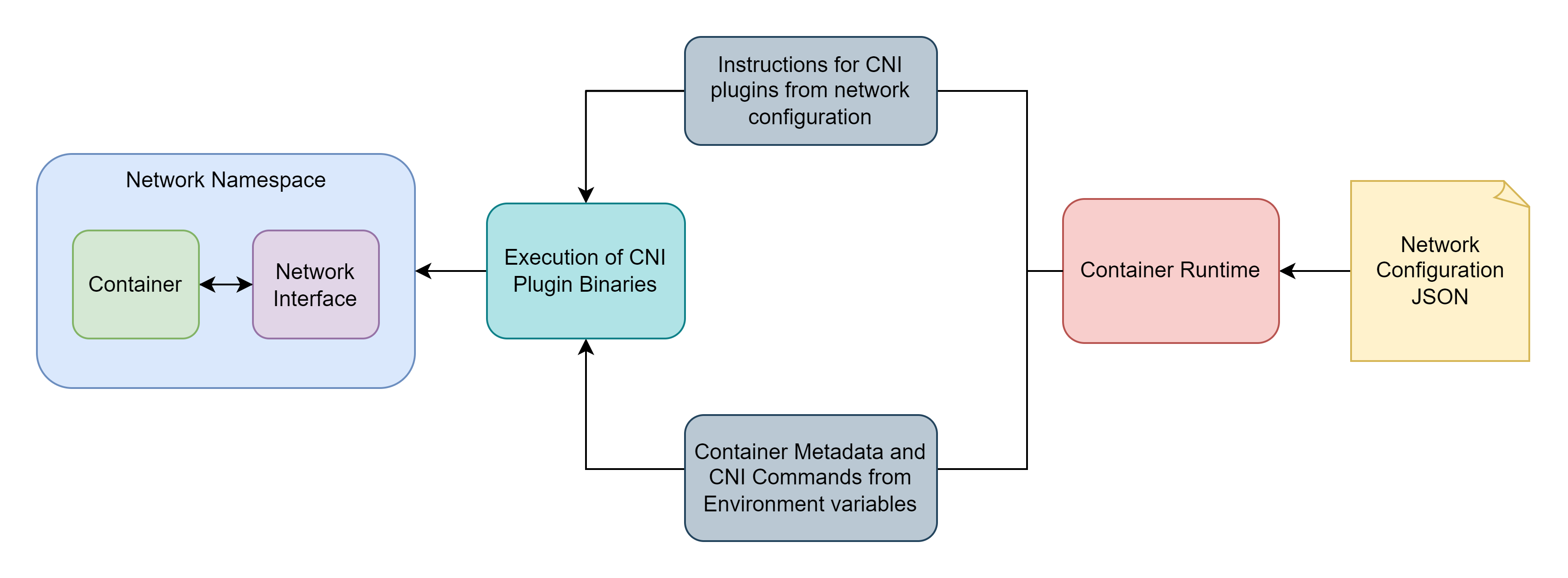
Container Network Interfaces (CNI)
Container runtimes allocate network namespaces for containers deployed on the host. A network interface (like docker0, bridge, or host) is configured inside the namespace to facilitate the communication with host, the internet, or other containers. The Container Network Interface (CNI) project provides specifications and libraries for implementing a plugin-based solution for managing network interfaces for containers. The runtime executes the CNI plugins provided as binary executable files. A network configuration is passed to the runtime as a JSON file....